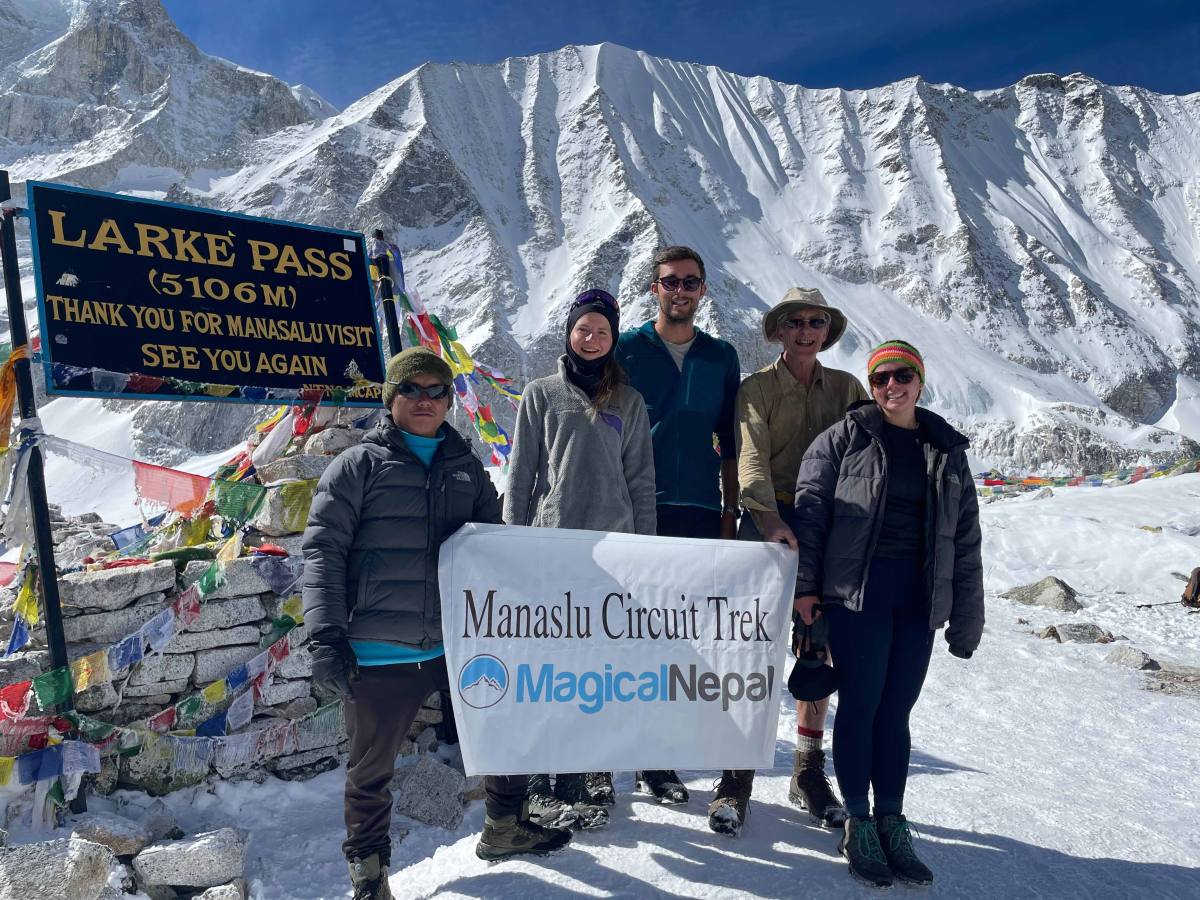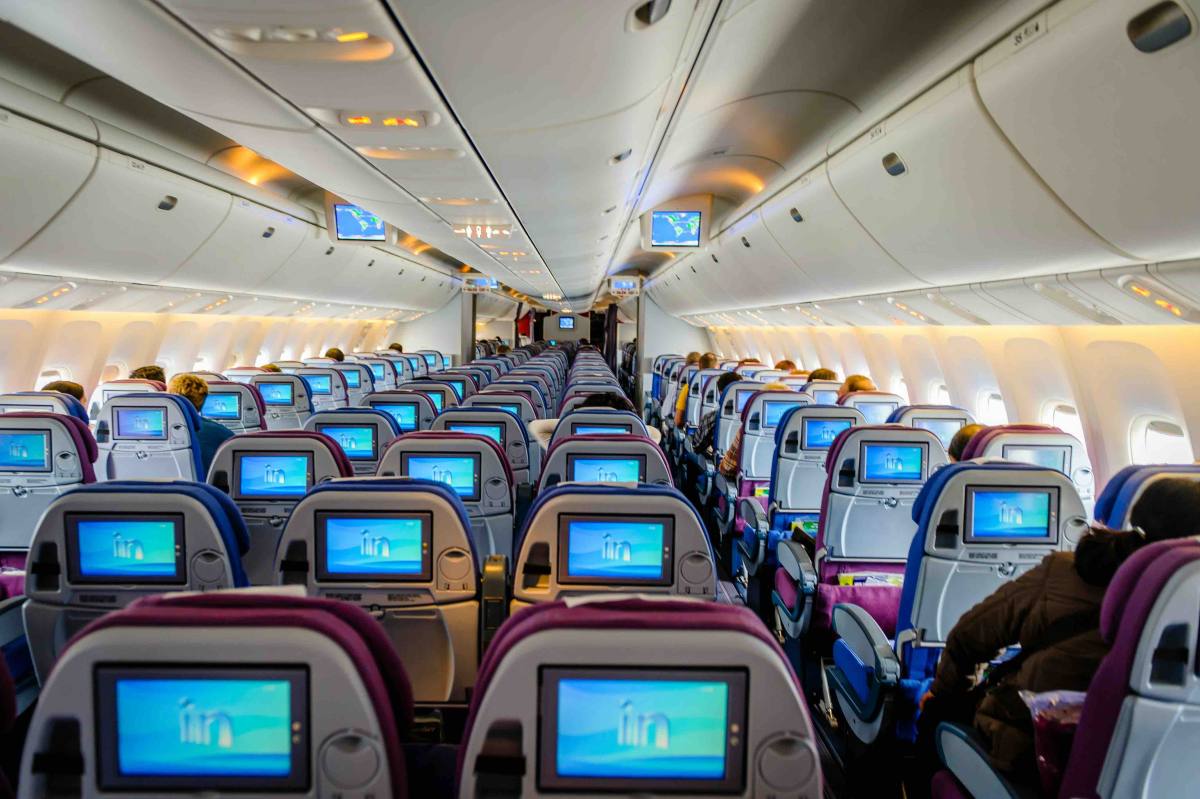How to Prepare for High-Altitude Trekking in Nepal
If you’re preparing to experience high-altitude trekking for the first time, there are some essential things to know before you get started. Understanding what to expect can help you to have the very best experience and chance of success. Guided by a Nepal travel expert, we have bring you our Travelista guide to high-altitude trekking.
Trekking in the high mountains of Nepal is an amazing experience but it comes with challenges especially when you are trekking at high altitude.
Trekking at high altitude requires some serious preparation to stay healthy and safe. If you are not used to the thin mountain air you might get headaches, fatigue or even altitude sickness.
A trek that’s definitely worth considering is the Manaslu Trek—it’s not just about the spectacular views of Mount Manaslu, but also about immersing yourself in the unique cultural experiences the region has to offer.
In this guide, we’ll break down how to prepare for high-altitude trekking in Nepal, in easy-to-understand steps, so you can have a smooth and memorable adventure.

Why Is High-Altitude Trekking Challenging?
High altitude trekking means walking above 2,500 meters (8,200 feet) above sea level. As you go higher the air gets thinner meaning less oxygen. Your body needs time to adjust to this change which is called acclimatisation.
If you don’t give your body time to adjust you might start feeling symptoms of altitude sickness – headaches, fatigue and dizziness. That’s why it’s so important to prepare well before you start high altitude trek. Taking it slow and giving yourself time to acclimatise will make all the difference in keeping you safe and enjoying the adventure.
Understanding Altitude Sickness
Altitude sickness, also known as Acute Mountain Sickness (AMS), occurs when your body doesn’t get enough oxygen at high altitudes. Some of the common symptoms are:
- Headache
- Nausea (feeling like you want to throw up)
- Dizzy
- Tired
- Trouble sleeping
If you start feeling any of these while trekking, don’t ignore it. Just stop, rest and don’t go higher until you feel better. In the worst case you might need to descend to a lower altitude for a while to give your body to recover.
Just remember altitude sickness is not to be feared – just be patient with your body and go slow. The more you acclimatise the less you will experience it. Preparation is key and giving yourself time to adjust will make a big difference along the way.

10 Tips for Preparing for High-Altitude Trekking
To make sure you are ready for high-altitude trekking in Nepal, it’s important to get your body and mind ready for the challenge. Here’s how you can prepare yourself—both physically and mentally—so you can enjoy the adventure without any surprises.
1. Train Your Body Before the Trek
Trekking in the mountains requires physical fitness, especially at high altitude. Training your body before your trek will make a big difference.
- Cardio: Cardio exercises like running, cycling, swimming or brisk walking will improve your endurance. Aim for 30 to 45 minutes, 3 to 4 times a week, in the months leading up to your trek. Doesn’t have to be intense, just consistent.
- Strength Training: Trekking requires you to carry a backpack and walk on uneven trails. You’ll need strong legs and a solid core to handle it. Do strength training exercises like squats, lunges and planks to build your muscles especially in your legs and core.
- Hike: If possible, hike on hills or uneven terrain with a backpack. This will help you get used to walking with weight on your back and prepare you for the long days of trekking in Nepal.
2. Acclimatisation Is King
When you’re trekking at high altitude, your body needs time to adjust. You can’t rush it and that’s okay—it’s all part of the adventure.
- Climb Slow: Take your time and don’t rush. The best way to acclimatise is to take it easy. A good rule is to not gain more than 300 to 500 meters (1,000 to 1,600 feet) in altitude per day. Take it gradual and don’t push yourself too hard in one go.
- Take Rest Days: This is one thing I can’t stress enough. You’ll probably feel the urge to keep moving but rest days are crucial for your body to adjust. Rest days help your body adjust to the altitude and lower the risk of getting altitude sickness. On rest days, you can do short hikes to higher altitude and then come back down to sleep at a lower altitude. This is called “climb high, sleep low”.
- Listen to Your Body: Everyone reacts differently to high altitude. If you feel any symptoms of altitude sickness, rest until you feel better. Don’t push yourself to go higher if you’re not feeling well.
3. Stay Hydrated
Water is your best buddy on the trail. At high altitude, your body can lose moisture faster than you think so staying hydrated is more important than ever.
- Drink Water Regular: Try to drink at least 3 to 4 litres of water a day while trekking. Carry a water bottle or hydration bladder and take small sips often. It’s easy to forget to drink when you’re focused on the trek but make it a habit to take small sips regularly.
- Avoid Alcohol and Caffeine: Alcohol and caffeine will dehydrate you so avoid them while trekking at high altitude. Instead, drink water, herbal tea or soups. Instead, stick to water, herbal tea or hot soup—something that’ll hydrate you and warm you up without making things worse.
Also Read: Why I Quit My Job, Travelled The World and Moved to Nepal
4. Eat Well to Power Your Body
At high altitude, your body needs more energy. Eating the right food will help you stay strong and energised on the trek.
- Carbs Are King: When you’re trekking in the mountains, carbs are your best source of energy. Think rice, pasta, potatoes and bread. These foods give you long lasting energy and help your body use the limited oxygen more efficiently.
- Eat Small Meals Frequently: You may not feel hungry at high altitude but it’s important to eat small meals frequently to keep your energy up. Bring snacks like nuts, energy bars or dried fruit to snack on throughout the day. Trust me, having a snack ready when you’re feeling low on energy can make a big difference.
- Don’t Eat Heavy: Eating heavy or fatty food can make you feel sluggish. Instead eat light and easily digestible food that won’t weigh you down.
Also Read: Why I Quit My Job, Travelled The World and Moved to Nepal
5. Get the Right Gear
High altitude trekking in Nepal requires the right gear. The weather can be cold and unpredictable so make sure you have everything you need to stay warm and comfortable.
- Layer Up: The best way to stay warm is to layer. Wear a base layer to keep you dry, an insulating layer like a fleece jacket to keep you warm and an outer waterproof layer to protect you from wind and rain.
- Good Trekking Boots: Wear sturdy, waterproof trekking boots with good ankle support. Break them in before your trek to avoid blisters.
- Sleeping Bag: At high altitude the nights can be very cold. Bring a sleeping bag rated for -10°C or lower.
- Trekking Poles: Trekking poles will help you maintain your balance and reduce stress on your knees especially when walking uphill or downhill.
6. Learn Breathing Techniques
Breathing deeply will get more oxygen to your body which is important at high altitude.
- Deep Breathing: Breathe in slowly and deeply through your nose, hold for a moment and breathe out slowly through your mouth. Deep breathing will get more oxygen to your body and feel better at high altitude.
- Take It Easy: Walk at a steady pace and take breaks when needed. Don’t rush, going too fast will make you short of breath and altitude sickness.
7. Get plenty of rest
Rest is key when trekking at high altitudes. Your body needs time to recover after a long day of trekking.
- Sleep Well: Get at least 7 to 8 hours of sleep every night. A good sleeping bag and warm clothes will help you sleep better.
- Take Breaks During the Day: During the trek, take breaks to rest and catch your breath. Don’t overdo it, especially on steep parts.
8. Medication is available to help combat altitude sickness
Some people take medication to prevent altitude sickness. Always consult with your doctor before taking any medication.
- Diamox: Diamox is a common medication that can help prevent altitude sickness. It helps your body adjust to high altitudes faster. Talk to your doctor if Diamox is for you.
9. Mental Preparation
High altitude trekking is physically and mentally demanding. Preparing your mind is just as important as preparing your body.
- Stay Positive: Trekking at high altitudes can be tough, especially when you are tired or facing challenges. Stay positive and remind yourself why you’re here.
- Set Daily Goals: Instead of thinking of the whole trek, set daily goals. Focus on reaching the next camp or the next section of the trail. This will keep you motivated.
- Know When to Quit: Sometimes it’s better to quit than to risk your health. If you’re feeling very sick or the weather is bad, don’t be afraid to quit. The mountains will always be there for you to try again.
10. Travel with a Guide or Group
If you’re new to high altitude trekking, it’s best to travel with a guide or a group.
- Experienced Guide: A guide knows the trail, can help you acclimatize and will know what to do in case of an emergency. They can also make your trek safer and more fun.
- Group Support: Trekking with a group is helpful. You can support each other and it’s safer in case something goes wrong. Having others around makes the experience more fun.
High altitude trekking in Nepal requires preparation for a safe and fun experience. The mountains are beautiful but can be tough if you’re not ready. The Manaslu Trek with its views of Mount Manaslu and cultural experiences can be one of the best treks in Nepal if you prepare well.
Final Thoughts
By training your body, acclimatising properly, staying hydrated, eating well, and having the right gear, you can reduce the risk of altitude sickness and have an amazing adventure.
Remember to take your time, listen to your body, and enjoy the journey. With good preparation, high-altitude trekking in Nepal can be one of the most rewarding experiences of your life. Safe trekking!






Leave a comment